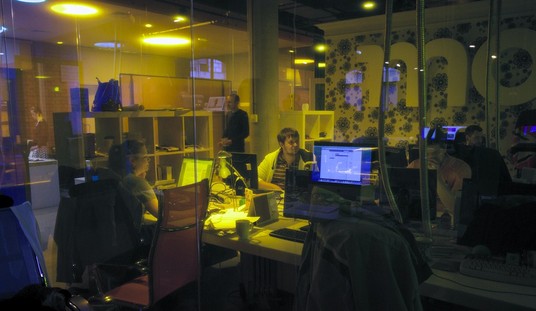The July jobs report is out, and it is bad news for the Harris-Biden administration. The report shows that job growth in the United States fell way short of expectations, the unemployment rate went up, and a recession has been triggered.
"The unemployment rate rose by 0.2 percentage point to 4.3 percent in July, and the number of unemployed people increased by 352,000 to 7.2 million. These measures are higher than a year earlier, when the jobless rate was 3.5 percent, and the number of unemployed people was 5.9 million," reports the Bureau of Labor Statistics. The unemployment rate is now at its highest level since October 2021.
Unemployment rates increased for adult men and whites, reaching 4.0% and 3.8%, respectively, while rates for other major worker groups, including adult women, teenagers, blacks, Asians, and Hispanics, remained largely unchanged. Temporary layoffs surged by 249,000, hitting 1.1 million, though permanent job losses held steady at 1.7 million. Long-term unemployment stayed at 1.5 million, up from 1.2 million last year, accounting for 21.6% of the jobless.
July saw a meager addition of 114,000 nonfarm payroll jobs, falling drastically short of the 215,000 monthly average over the last year. Key sectors like health care, construction, transportation, and warehousing managed modest gains, but the information sector suffered a significant loss of 20,000 jobs. Furthermore, revisions to May and June employment figures revealed a net decrease of 29,000 jobs from previous reports.
Flashback: June Jobs Report Shows That the U.S. Is Close to Recession
Perhaps the biggest news from the jobs report is that we've technically entered a recession, according to the rule named for economist Claudia Sahm. According to the Federal Reserve Bank of St. Lous, the "Sahm Recession Indicator signals the start of a recession when the three-month moving average of the national unemployment rate (U3) rises by 0.50 percentage points or more relative to the minimum of the three-month averages from the previous 12 months."
It's 0.53 percentage points now.
Welcome to the Harris-Biden Recession.
— Matt Margolis (@mattmargolis) August 2, 2024
The Sahm Rule Recession Indicator shows that a recession has been triggered. pic.twitter.com/G3Ftnuk8lg
"The Sahm Rule has been triggered before every U.S. recession since the 1970s," notes a report from Barron's. "Economist Claudia Sahm, the creator of the indicator, has noted, however, that this time could be different. The rising unemployment rate hasn’t come due to layoffs and negative monthly payrolls numbers, but thanks to a larger supply of workers even as hiring has continued."
The Dow experienced a nearly 500-point drop on Thursday over recession fears.
Stocks sold off Thursday, with the Dow Jones Industrial Average tumbling nearly 500 points, as investors’ fears over a recession surfaced.
The Dow dropped 494 points, or 1.2%. The S&P 500 shed 1.4%, while the Nasdaq Composite slipped 2.3%. The Russell 2000 index, the small-cap benchmark that has rallied lately, dropped 3%.
Some fresh data raised the specter of an economic contraction and the notion that the Federal Reserve could be too late to start cutting interest rates.
Initial jobless claims rose the most since August 2023. And the ISM manufacturing index, a barometer of factory activity in the U.S., came in at 46.8%, worse than expected and a signal of economic contraction.
The 10-year Treasury yield broke below 4% for the first time since February in a sign that more investors were seeking safe-haven assets.
Make no mistake: This is bad news for the country and for the Harris-Biden administration.










Join the conversation as a VIP Member